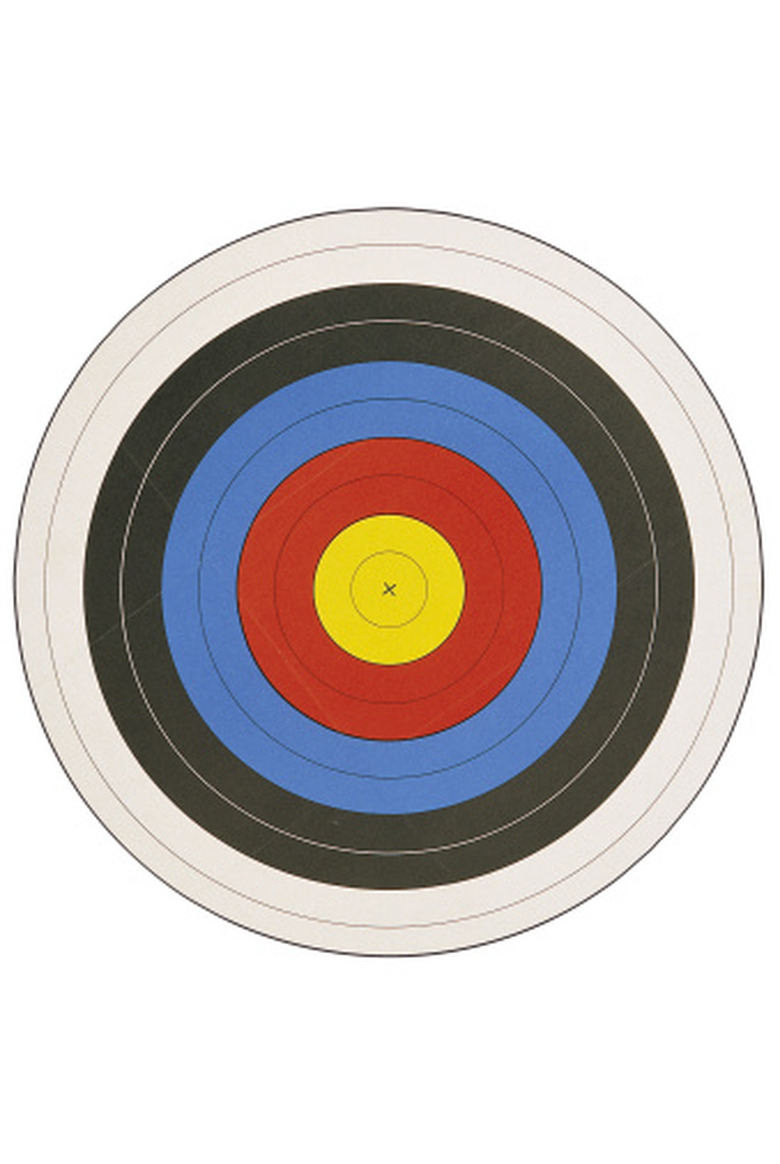How To Write The Equation Of The Circle In Standard Form
Different geometric shapes have their own distinct equations that aid in their graphing and solution. A circle's equation can have either a general or standard form. In its general form, ax2 + by2 + cx + dy + e = 0, the circle's equation is more suitable for further calculations, while in its standard form, (x – h)^2 + (y – k)^2 = r^2, the equation contains easily identifiable graphing points like its center and radius. If you have either the circle's center coordinates and radius length or its equation in the general form, you have the necessary tools to write the circle's equation in its standard form, simplifying any later graphing.
Origin and Radius
Step 1
Write down the standard form of the circle's equation (x – h)^2 + (y – k)^2 = r^2.
Step 2
Substitute h with the center's x-coordinate, k with its y-coordinate, and r with the circle's radius. For example, with an origin of (-2, 3) and a radius of 5, the equation becomes (x -(-2))^2 + (y – 3)^2 = 5^2, which is also (x + 2)^2 + (y – 3)^2 = 5^2, since subtracting a negative number has the same effect as adding a positive one.
Step 3
Square the radius to finalize the equation. In the example, 5^2 becomes 25 and the equation becomes (x + 2)^2 + (y – 3)^2 = 25.
General Equation
Step 1
Subtract the constant term from both sides from both sides of the equation. For example, subtracting -12 from each side of the equation x^2 + 4x + y^2 – 6y – 12 = 0 results in x^2 + 4x + y^2 – 6y = 12.
Step 2
Find the coefficients attached to the single-degreed x- and y-variables. In this example, the coefficients are 4 and -6.
Step 3
Halve the coefficients, then square the halves. In this example, half of 4 is 2, and half of -6 is -3. The square of 2 is 4 and the square of -3 is 9.
Step 4
Add the squares separately to both sides of the equation. In this example, x^2 + 4x + y^2 – 6y = 12 becomes x^2 + 4x + y^2 – 6y + 4 + 9 = 12 + 4 + 9, which is also x^2 + 4x + 4 + y^2 – 6y + 9 = 25.
Step 5
Place parentheses around the first three terms and the last three terms. In this example, the equation becomes (x^2 + 4x + 4) + (y^2 – 6y + 9) = 25.
Step 6
Rewrite the expressions inside the parentheses as a single-degreed variable added to the respective coefficient half from Step 3, and add an exponential 2 behind each parentheses set to convert the equation to the standard form. Concluding this example, (x^2 + 4x + 4) + (y^2 – 6y + 9) = 25 becomes (x + 2)^2 + (y + (-3))^2 = 25, which is also (x + 2)^2 + (y – 3)^2 = 25.
Cite This Article
MLA
Gartneer, Chance E.. "How To Write The Equation Of The Circle In Standard Form" sciencing.com, https://www.sciencing.com/write-equation-circle-standard-form-8553188/. 24 April 2017.
APA
Gartneer, Chance E.. (2017, April 24). How To Write The Equation Of The Circle In Standard Form. sciencing.com. Retrieved from https://www.sciencing.com/write-equation-circle-standard-form-8553188/
Chicago
Gartneer, Chance E.. How To Write The Equation Of The Circle In Standard Form last modified March 24, 2022. https://www.sciencing.com/write-equation-circle-standard-form-8553188/
